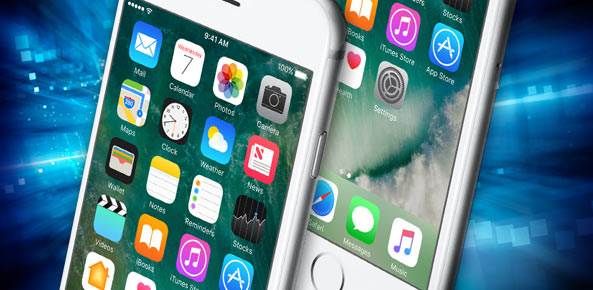
I believe that Apple’s next big iPhone release is going to feature augmented-reality technology. Obviously, nobody at Apple has said anything about such a product. But the now-shipping iPhone 7 Plus, complete with dual-camera technology, is the latest hint Apple is moving in that direction. This, along with several high-profile company purchases (Metaio in 2015 and PrimeSense in 2013), points to this technology eventually appearing in products.
One more thing: Apple CEO Tim Cook can’t stop talking about how big an opportunity augmented reality represents.
Dual-Camera Technology
Apple executives spent a great deal of time during the recent iPhone 7 launch event talking about the current and future capabilities of the two 12-megapixel cameras integrated into the iPhone 7 Plus. The first camera is a 28mm-equivalent lens that most would consider wide angle (the iPhone 7 has the same camera). The second is a 56mm equivalent and, while Apple’s Phil Schiller kept calling it a telephoto lens, the reality is that it’s actually more of a portrait lens.
Here’s my bet: When Apple heads toward its next big hardware revision, we’ll see an iPhone (and maybe an iPad Pro) with AR capabilities.
In addition to giving the phone an effective 2x optical zoom, the dual cameras enable a long list of software capabilities that should result in notably better photos for most users. That’s interesting (and very useful), but what interests me more about this hardware is the fact that Apple could use the dual cameras to capture information about the objects and space in front of the cameras. Two cameras allow the device to capture and create depth-mapping information.
Earlier this year, I wrote about Lenovo’s Phab Pro 2, the first Tango-enabled smartphone. Tango is Google’s handheld augmented-reality platform. The Lenovo phone actually uses three cameras and a host of other sensors to capture motion, depth and local area information about the phone’s surroundings. The result is a device that knows where it is in space, which lets you do many fascinating things in augmented reality. To vastly oversimplify, think about what Pokémon Go does on your current smartphone, but many times smarter and more powerful.
Two Key Apple Acquisitions
Apple’s recent purchase of Metaio and PrimeSense makes me think it’s moving toward this handheld augmented-reality future. Apple bought Metaio in May, 2015. It was a German company, started in 2003, that sold software that pulled together camera images and computer-generated objects. Before the purchase, numerous companies used the technology to create applications for use in different vertical markets including retail, industrial and automotive. After completing the purchase, Apple took the product off the market. Many assume that Apple is working to create custom silicon in conjunction with this software for future products.
PrimeSense was an Israeli 3-D sensor company that Apple purchased for $345 million in 2013. The company had a mobile-sized 3-D sensor (code-named Capri) that worked with its software technology to scan and capture three-dimensional objects. The company was also a founding member of the open source framework called OpenNI (Natural Interaction) designed to capture body motion and hand tracking. Stories at the time of the acquisition noted that the Capri sensor was relatively expensive to produce, which kept it from gaining the attention of other device manufacturers. This is the type of tech Apple loves to integrate into its hardware to drive additional differentiation from the rest of the market.
Tim Cook on Augmented Reality
Finally, there are Tim Cook’s comments. In the most recent Apple earnings call, Cook pointed out that, while he thinks both virtual and augmented reality are interesting, he sees a much bigger opportunity in augmented reality, especially regarding commercial use cases (I strongly agree). More recently, in an interview on “Good Morning America,” Cook once again spelled out his enthusiasm for augmented reality. He noted that by using AR, two people can share a common experience, which is hard to do in the heavily isolated world of VR.
Now, it may well be that Cook’s recent comments around AR versus VR are meant to throw people off Apple’s trail. In fact, I think it’s highly likely that Apple is working on both technologies and, eventually, we may well see some eyewear that utilizes not only the technologies above but a future version of the company’s new W1 chip currently shipping in the AirPods. But here’s my bet: When Apple heads toward its next big hardware revision, we’ll see an iPhone (and maybe an iPad Pro) with AR capabilities.
© 2016 Re/Code under contract with NewsEdge. -.







